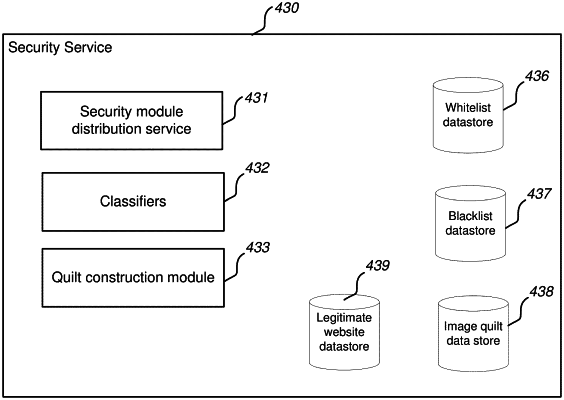| CPC H04L 63/1483 (2013.01) [G06V 30/418 (2022.01); H04L 63/1433 (2013.01)] | 17 Claims |

|
1. A method comprising:
retrieving, by a mobile device, a representative image of an unknown website detected by the mobile device;
determining, by the mobile device, whether the representative image matches an image of a known legitimate website by:
removing a transparency layer from the representative image to form a modified representative image;
comparing the modified representative image to a set of known images, each of the known images corresponding to one or more respective known websites, each of the known images not having a transparency layer, wherein transparent features are compared in the comparing; and
determining that the representative image matches at least one of the known images based on the comparing;
responsive to determining that the representative image matches the image of the known legitimate website, determining, by the mobile device, that the unknown website is malicious; and
performing, by the mobile device, a security action responsive to determining that the unknown website is malicious.
|